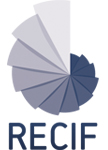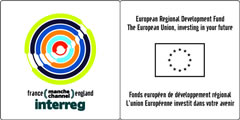
RECIF project
|
The stakes for RECIF As the second largest shellfish producer in Europe, France has an important role to play in the domain of rearing conchylium. The country produces on average 200,000 tonnes of shellfish per year from farming (CNC, 2012) and 50,000 tonnes from fishing (CNP, 2012). Lower Normandy and Brittany are the two regions supplying the most shell fish products, such as scallops, squid scallops and oysters. There are also large sources of slipper limpet off the coasts of Brittany, Lower Normandy and the west-coast region of Vendée, estimated at several million tonnes. Once the bivalve inside a sea shell has been removed, the shell itself represents around 90% (in weight) of the product and is considered as waste. Several studies have been carried out as well as research on a worldwide scale on how to make use of these shells, and in particular oyster shells, by transforming them into construction materials. Shellfish by-products represent a local resource that needs to be given added value by means of pre-treatment and studies, creating a secondary raw material for the development of new materials with specific properties and uses. Amongst the products that have been created are eco-friendly self-draining slabs, which are in the final phases of development as part of the VECOP European project (ESITC Caen et al. 2013) and a material for building artificial reefs is also currently being developed.
Answers provided by the RECIF project As part of the objective to better manage marine resources and improve the ecosystem around the coasts of La Manche, the RECIF project has several clear aims:
The RECIF project was selected as European cross-border cooperation programme INTERREG IV France (Manche) / England and is co-financed by the ERDF. It involves participation from 8 French and British partners and is backed by the Lower Normandy Regional Authorities.
Areas of work The RECIF project therefore offers a new industrial branch which aims to enhance the use of shellfish by-products, enabling the re-use of waste whilst also creating a solution that benefits development of the marine ecosystem. The second major issue for this project is to understand the role of reefs within the phenomena of improving and developing biodiversity in the ecosystem around La Manche. Several areas of work and actions have been created in order to meet these objectives:
Work on the RECIF project will start in September 2011. In the first phase, all 8 partners will work on the project's common objectives and define the areas of work. The RECIF project will officially be launched in April 2013.
The project is based around 5 areas or work packages (WP) with actions and deliverables that implicate all of the partners. The French-British partnership is therefore present at all stages of the RECIF project. As the figures below show, the areas of work are inter-dependant and the results produced by each area can be used by others. This process necessitates regular exchanges between French and English partners throughout the various phases of the project. The RECIF project is also based on the complementary skills of the French (University of Caen Lower Normandy, ESITC Caen, National Natural History Museum, TPC and EMCC) and English (Plymouth Marine Laboratory, Universities of Southampton and Exeter) partners as well as their interest in the project's objectives. This cross-border collaboration encourages the transfer and pooling of knowledge, and results between partners and the opportunity to exchange on a problem known to both countries. The RECIF project will run up until June 2015, once the project's artificial reef has been deployed off the coast of La Manche and the necessary environmental monitoring has been carried out to determine its impact on the marine ecosystem.
|



